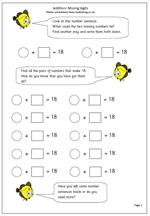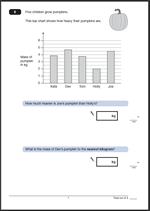 Here are the answers and tips on how to go about answering question 7 from the KS2 Maths SAT Paper B 2011. Two small boats are positioned along a centimetre scale and two questions follow.
Here are the answers and tips on how to go about answering question 7 from the KS2 Maths SAT Paper B 2011. Two small boats are positioned along a centimetre scale and two questions follow.
The answer to question 7a: 1 ½ or 1.5
One mark awarded for a correct answer.
Suggested method:
This question is all about reading scales. The first thing to work out is how the scale has been labelled, which is every centimetre, with every half centimetre marked but not labelled. To work out the distance between the two boats read the scale at the end of boat 1, which is 8 cm and the scale at the start of boat 2, which is 9.5 cm. Subtract to find the difference.
Alternatively, count the number of half centimetre units between the boats, which is 3.
3 half centimetres is 1.5 cm.
The answer to question 7b: 1
One mark awarded for a correct answer.
Suggested method:
Find the length of boat 1, which is 3 cm.
Find the length of boat 2, which is 4 cm.
Subtract 3 cm from 4 cm to leave 1 cm.
Unusually for this type of question it is drawn to actual size so a ruler could be used.
Please note that a pdf printout may not be exactly the size of the original page, depending on printer settings.








